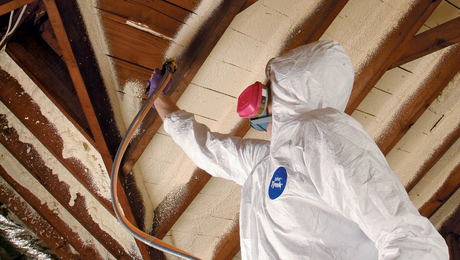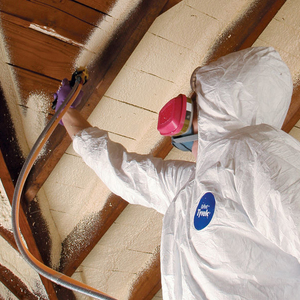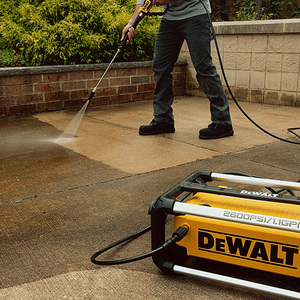If you have taken a plan for a new house, designed as a wood-framed structure, and converted it to CMU for south Florida construction, tell us about the details.
Discussion Forum
Discussion Forum
Up Next
Video Shorts
Featured Story

Spray foam is a great invention, but it's not always necessary.
Featured Video
SawStop's Portable Tablesaw is Bigger and Better Than BeforeHighlights
"I have learned so much thanks to the searchable articles on the FHB website. I can confidently say that I expect to be a life-long subscriber." - M.K.
Fine Homebuilding Magazine
- Home Group
- Antique Trader
- Arts & Crafts Homes
- Bank Note Reporter
- Cabin Life
- Cuisine at Home
- Fine Gardening
- Fine Woodworking
- Green Building Advisor
- Garden Gate
- Horticulture
- Keep Craft Alive
- Log Home Living
- Military Trader/Vehicles
- Numismatic News
- Numismaster
- Old Cars Weekly
- Old House Journal
- Period Homes
- Popular Woodworking
- Script
- ShopNotes
- Sports Collectors Digest
- Threads
- Timber Home Living
- Traditional Building
- Woodsmith
- World Coin News
- Writer's Digest


















Replies
I haven't made that conversion, no. I have converted some stick plans to ICF, though.
The easiest drafting for the change would be to leave the inside exterior wall dimension the same, and "push" the exterior dimension "out" to suit.
That fires up a whole bunch of issues.
Not least of which is "which" Florida cmu wall system? (CMU as bearing only, with veneer framin on one or both sides; CMU as entire wall, inside, outside, & structure; or some other hybrid). Which also spawns a "why" for cmu other than, e'erybody else does it that way.
By chaning the wall, the bearing points for the roof structure change. That will change the truss/joist tables (if provided). The wall thickness change chages the trim details, and the soffit, and the corner details. it's not a lot of "new" details, so much as swapping one completed set of details for another.
If a person were contracting my services, I'd tell them it would be a complete re-draw. By the time all of the finicky bits were worked out, the "might-as-well-as" changes would virtually change everything.
Now, that's a guess, an experienced guess, a not-paid-nearly-enough, not-making-that-mistake-again, guess.
Thanks for the reply. I know it is a complete redraw situation, and most all of the design and trim changes required by a thickening of the walls.
To be able to get a permit, I'll have to have plans wet stamped by a FL PE or design professional, so if I do this, I'll give the planset to a qualified pro and have the redraw done by them, then sealed.
But I am wondering if the CMU conversion is really required. Maybe there is something I am missing.
Most everything I see being built from Ft. Myers down through Marco Island, in detached single family res, is CMU, and the exterior wall finish is stucco. Quite often they frame the second story in wood. Engineered wood trusses rule the roof structure biz, I have never, in 15 years observing, seen a stick-framed roof.
But I don't want the stucco exterior. I like the old Florida cottage retro style, seen in some, but not many, of the new homes there. Clap siding, wood trim, tin roof. With today's materials, that means fiber cement, Azek, and Kynar-finished galvalume.
I wonder if they are doing the structures of these "cottage" styles in wood framing. I have not seen any of the tract builders doing this style of house in the area under discussion, I've only observed this style in some of the large expensive customs near the beach and in the older and historic areas.
I know that termites are an issue, but with proven methods for termite shielding, and good bug protection services, cannot one get through it? I dunno.
I know that many of the historic old homes in Ft. Meyers and Naples are wood framed, and date back 85 years and more.
the historic old homes in Ft. Meyers and Naples are wood framed, and date back 85 years and more
Which negates the "termite issue" some. I always thought that the Fla house wer block because block was available. They get some thermal mass--before anybody worried about thermal mass. The utilities are a big giany pain, though. Wires and plumbing have to be set in concrete (literally) way too early.
Then, there's the insulation factor. To get to AHJ-required R values means adding insulation. That's foam on the outside, or framed in on the inside. Start framing a wall for insulation & utilities, and now you have most of a bearing wall built. Which starts making the CMU a little redundant.
I may have to browse the Building Science site to see what their recommendation is.Occupational hazard of my occupation not being around (sorry Bubba)
thats what I did, took a stick frame house. added cmu on the outside leaving the stick dimesion alone. added the extra to the trusses. Filled the cmu with concrete. total termite proof. power bills run $29.00 in summer and hurricane Ivan went over the top (the eye) and had no damage.If you live in fla you be stupid to stick frame, cmu the only way.
The old Florida cracker shacks didn't have to worry about termites because they were all built with heart pine. The termites give up and go home when they try to bite that stuff! However, now frame homes are built with spruce or hemlock studs which are manna to termites. Figure on tenting your frame home every 5 to 8 years at about $1500 a pop and you'll still have some termite damage to repair each time. Heck, they even eat PT. There are plenty of CMU homes with FC or vinyl siding. They just shoot furring on and side as usual but obviously they are more expensive, upscale homes.
Theres no "mandatory" code requirement for it to be CMU in Florida. It could be frame but...
Termites are a HUGE concern! You could do all PT (I did an addition like that once) with a lot of shields and such but you still have a higher risk than a CMU home. Insulation is not a big deal really as our interiorexterior temp differences are not as drastic as other parts of the country so the high R-values in the walls are not as necessary as they are in a more drastic temperature.
I built a two story and went CMU the whole way up. Poured it all solid too! Sure I lost some R-value as a hollow block is better than solid by .7 I think? But I think it'll be stronger in high winds. It survived two near misses this year with all our storms so I think I'm OK?
I also had a concern with fire...
Mike